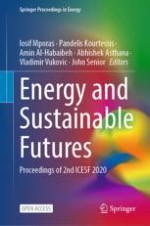
Open Access 2021 | OriginalPaper | Chapter
11. Integration of Building Information Modelling and Augmented Reality for Building Energy Systems Visualisation
Authors : Vishak Dudhee, Vladimir Vukovic
Published in: Energy and Sustainable Futures
Publisher: Springer International Publishing
Activate our intelligent search to find suitable subject content or patents.
Select sections of text to find matching patents with Artificial Intelligence. powered by
Select sections of text to find additional relevant content using AI-assisted search. powered by